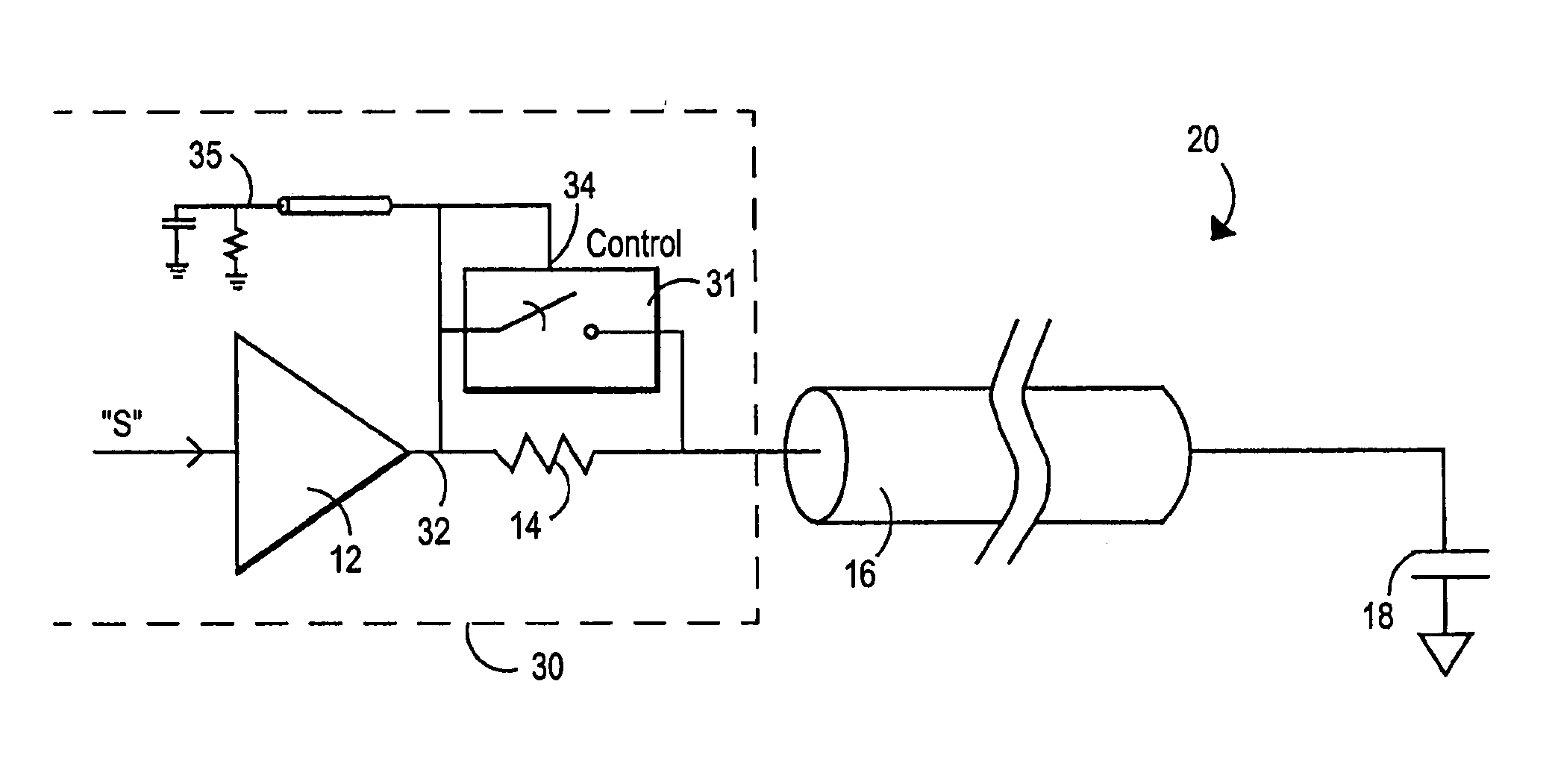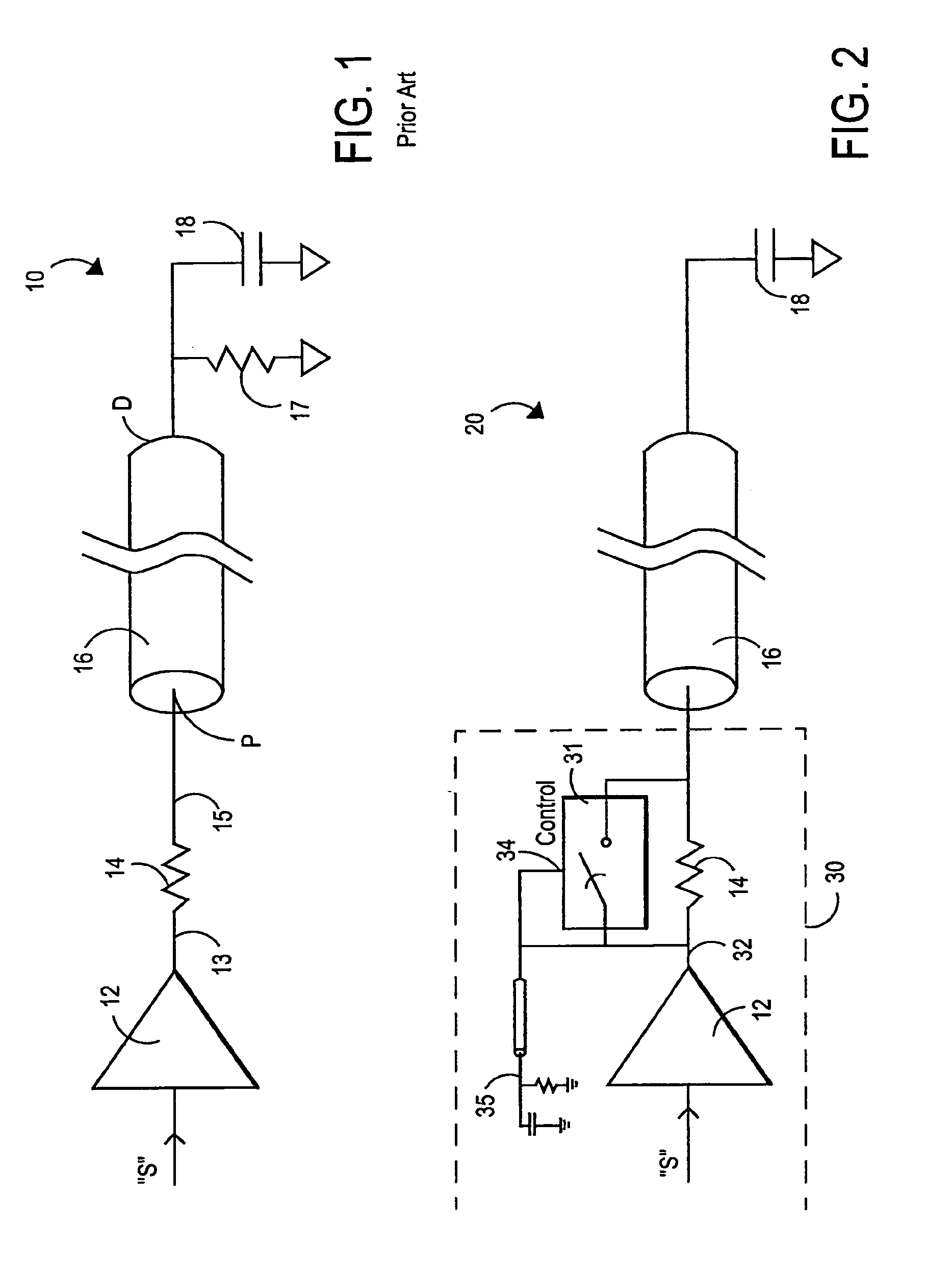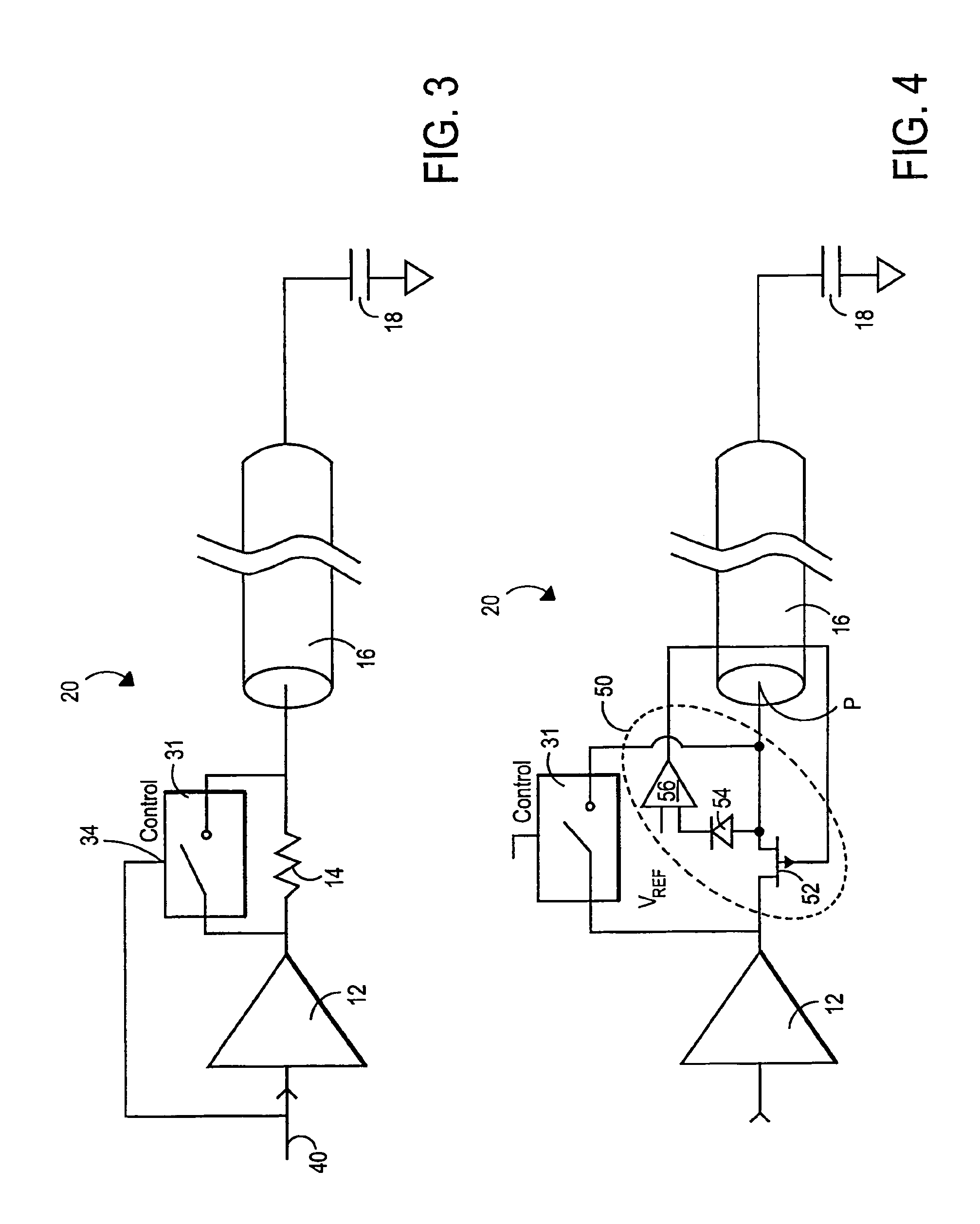Reflection-control system and method
a transmission line and reflection technology, applied in the direction of logic circuits, digital transmission, increasing modifications, etc., can solve the problems of electromagnetic noise, affecting signal integrity, and deteriorating signal integrity and transmission line behavior
- Summary
- Abstract
- Description
- Claims
- Application Information
AI Technical Summary
Problems solved by technology
Method used
Image
Examples
Embodiment Construction
[0024]FIG. 1 depicts a prior art circuit illustrating examples of series and parallel termination schemes. As shown in FIG. 1, basic driver 12 receives a signal “S” to be transmitted. Basic driver 12 typically transmits signal “S” from its output by applying digital HIGH and LOW signals, which typically have rising edges and falling edges during transitions between HIGH and LOW values. Basic driver 12 may be any of a variety of drivers including, for example, a Gunning Transistor Logic (GTL) style driver, a tri-state driver, or a complementary pair driver. These are just examples and those of skill in the art will recognize that the principles described here are applicable to a wide variety of driving circuits and conductive elements and media that exhibit transmission line behavior in the conveyance of energy.
[0025]Basic driver 12 is connected to a first terminal 13 of the series termination 14. Series termination 14 is also known as a “source termination” and may be referred to as...
PUM
 Login to View More
Login to View More Abstract
Description
Claims
Application Information
 Login to View More
Login to View More - R&D
- Intellectual Property
- Life Sciences
- Materials
- Tech Scout
- Unparalleled Data Quality
- Higher Quality Content
- 60% Fewer Hallucinations
Browse by: Latest US Patents, China's latest patents, Technical Efficacy Thesaurus, Application Domain, Technology Topic, Popular Technical Reports.
© 2025 PatSnap. All rights reserved.Legal|Privacy policy|Modern Slavery Act Transparency Statement|Sitemap|About US| Contact US: help@patsnap.com



